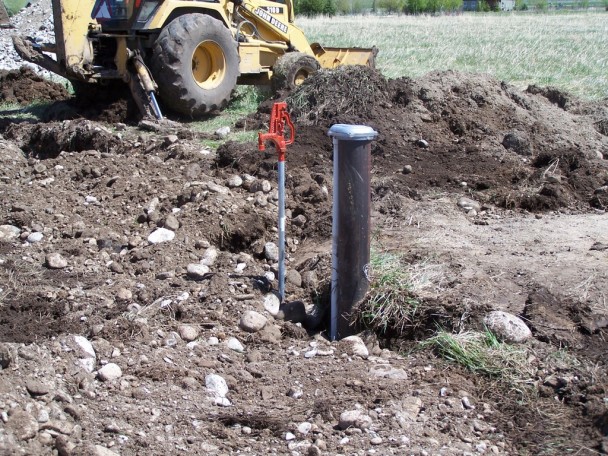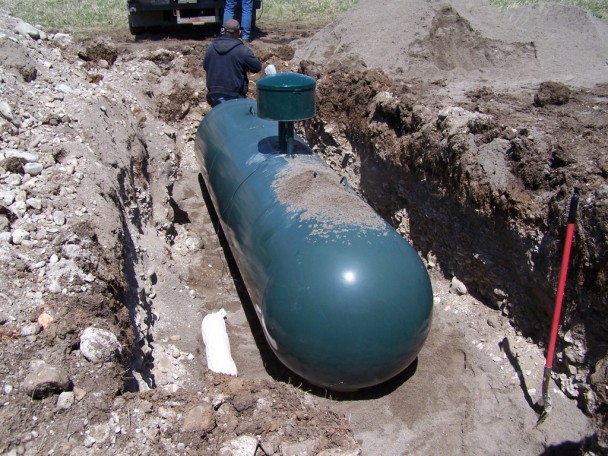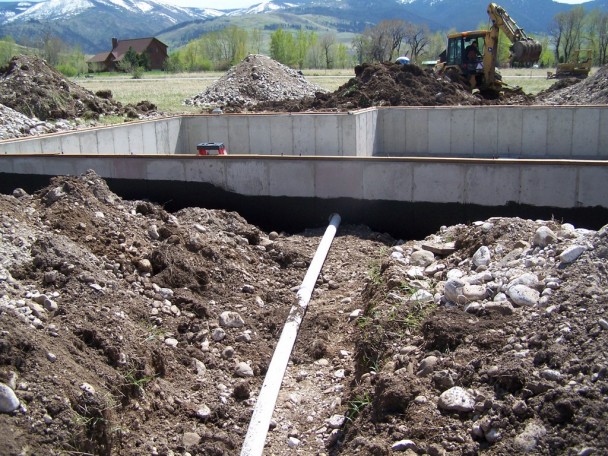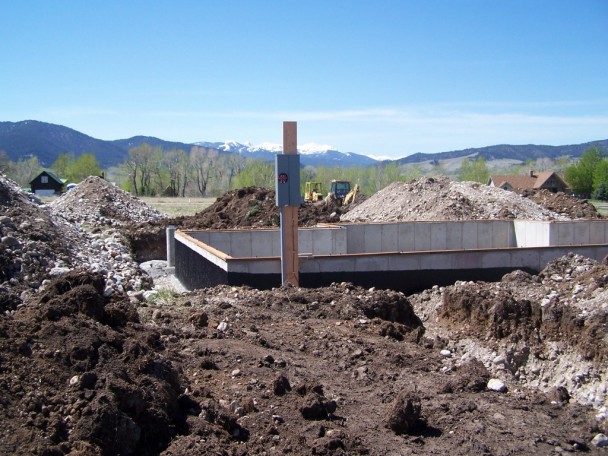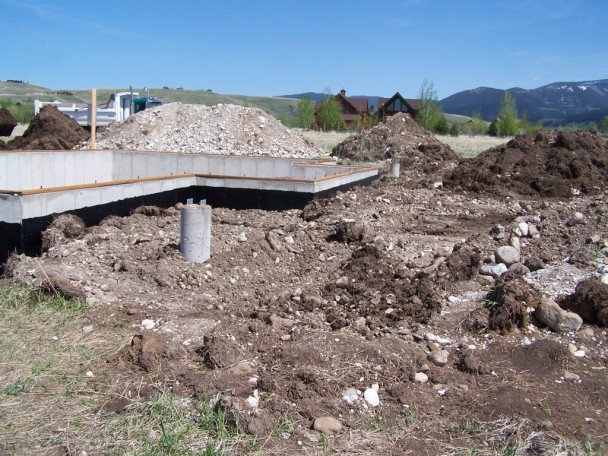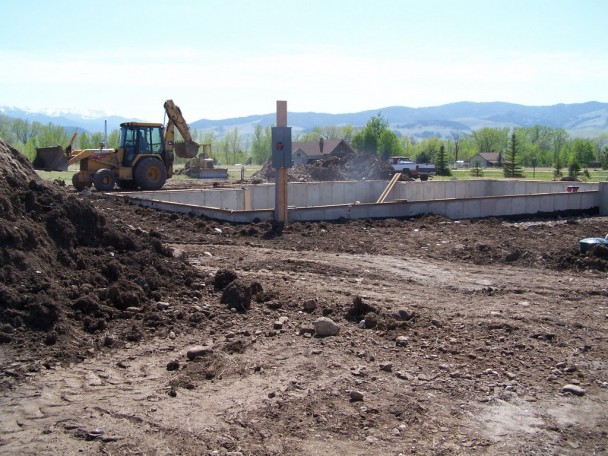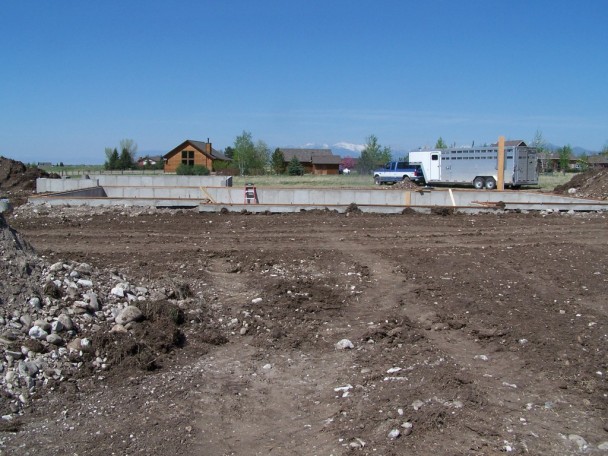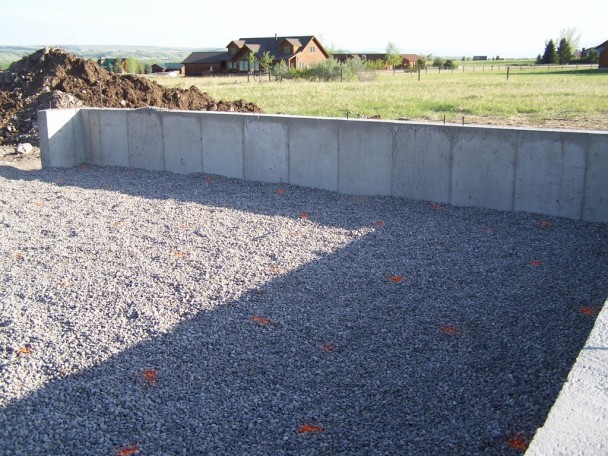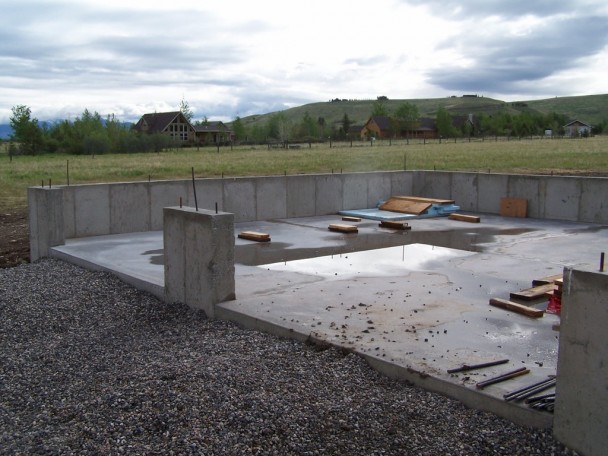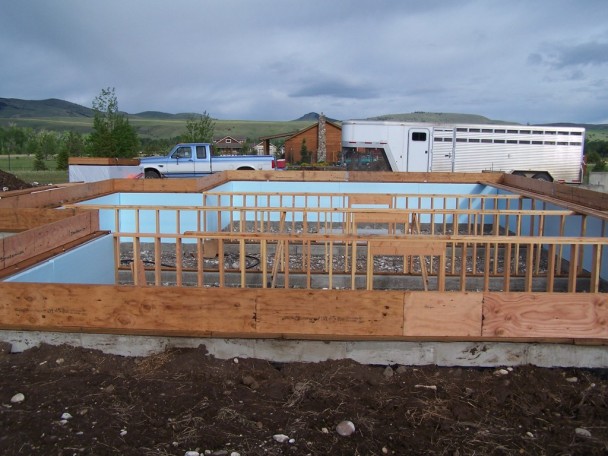Back Filling and Utilities Work
Now that the foundation is completed the back filling stage begins. This is also appropriate time to rough in the utilities to the home. On this project the well has already been drilled and the septic installed but it needs tied into the house.
Here we see the sill plate bolted into place on top of the foundation wall. We also have applied a black sealant vapor barrier to the foundation. The black ends where we anticipate the final grade of the top soil. On the back right corner the temporary electric meter box it located.
The well head is located a short distance from the front of the log home. The plumber came and installed the well pump, evident by the white pipe running down the side of the well head. We also installed a frost free water hydrant at the well head.
Behind the log home, to the right of the patio we buried a 1000 gallon in ground propane tank. The log home will have forced air heat and also a gas burning fireplace unit in the great room. Also, if you own your own propane tank you can choose which company fills it for you.
Just to the left of the propane tank the septic line is connected and extended to the house. When the foundation was poured we installed a section of PVC pipe inside the wall to bring the pipe through.
Here we see the electric box set into place and the back filling begun. With foundations it is very important not to back fill until the foundation has had an appropriate length of time to cure.
Here we see the front of the log home back filled. The round cement tubes extending out of the ground are support columns for the porch posts. Because the porch posts are going to support the roof system the cement pillars had to have a footer underneath them below the frost line.
Here we have moved to the back corner of the foundation. More dirt and material is being moved into place. While a large track-hoe was originally used to dig the foundation, this smaller CAT back hoe is perfect for the back filling and ditch digging for utilities.
Here the ground is getting smoother as the final grade is reaching the top of the foundation sealant.
Here we see the garage floor being prepare for the concrete. The gravel was spread and then packed with a packer. Then certain spots were marked with the spray paint to help guide the concrete workers.
Inside the crawlspace foundation we have installed ‘pony walls’ to support the interior log walls of the cabin. A doorway opening is left in the middle of each pony wall to provide access to other areas of the crawl space. Handcrafted logs are very heavy. With our Bear Creek custom log home design we have to interior log walls, one on each side of the great room.
Despite a rainy week we were able to fit pouring the garage cement floor. The gravel was also spread up to the garage doors.
And here we see the foundation with the rim board on top of the sill plate. Inside the foundation we have also installed insulation. Our next stage is to install the sub-floor. Also we will be pouring the large back cement patio out of the dining room and some smaller cement pads at the bottom of the staircases comes off the front of the log home.



